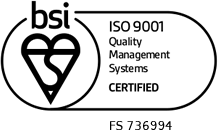Piezoelectric actuators are fast replacing more traditional electromechanical devices due to their small size, high strain, low power consumption, linear response and fine control. A small selection from the constantly expanding list of applications includes:
- optical component positioning
- pneumatic and hydraulic valve control – flow management or pumping e.g. fuel injection
- oscillation control or vibration damping
- movement in small robotic systems
The relationship between displacement and actuation force is an important characteristic of any piezoelectric actuator. These devices convert electrical energy into force or motion, or, under varying load conditions when coupled to an external mechanical system, the energy is split between generating displacement and force simultaneously . The proportion depends on the relative stiffnesses of the actuator and the resisting mechanics, with the energy conversion being a maximum where these are exactly matched.
In practice, the actual achievable stroke/load depends on mounting conditions, loading area and morphology, temperature, ageing, field-related material non-linearity, and many other factors. Often, manufacturers’ specifications and performance data are defined in different ways, making it impossible to compare directly between actuators from several alternative suppliers. In addition, it is often difficult to predict performance reliably by theory alone, so that measurements made under anticipated operating conditions are very often required. As a result, not only is design data scarce, but without any standard measurements its usefulness is severely limited, especially when choosing between several different actuators for a particular application.
For more information, advise or guidance on how piezo materials may solve your actuation requirements, please feel free to contact us.






